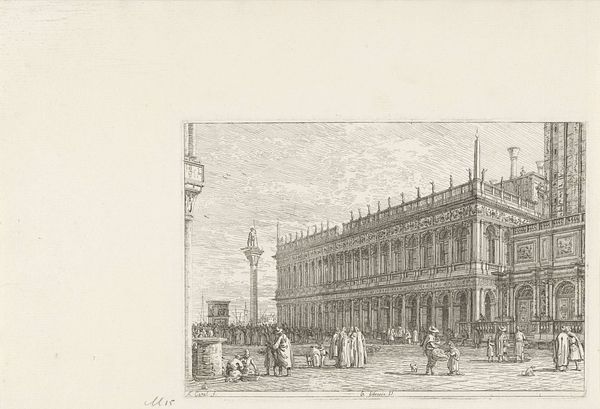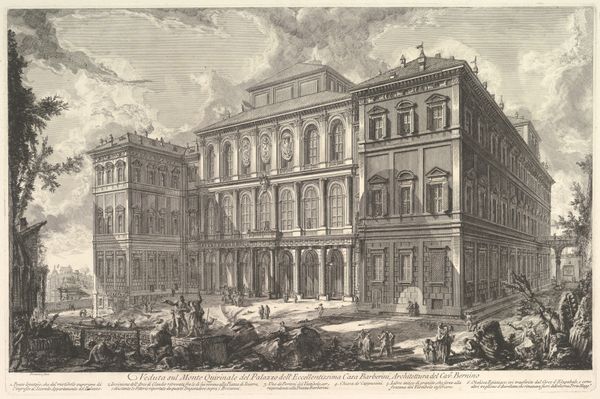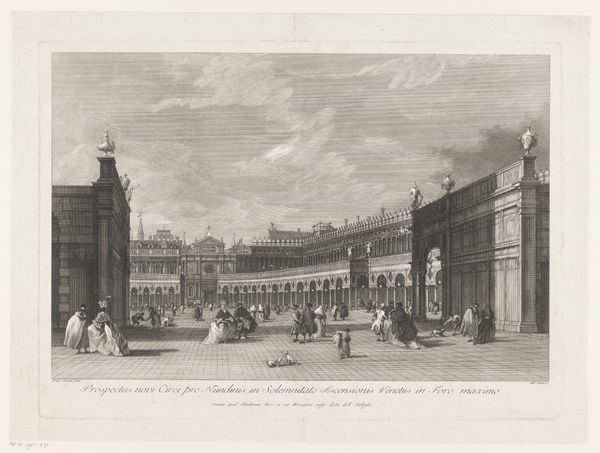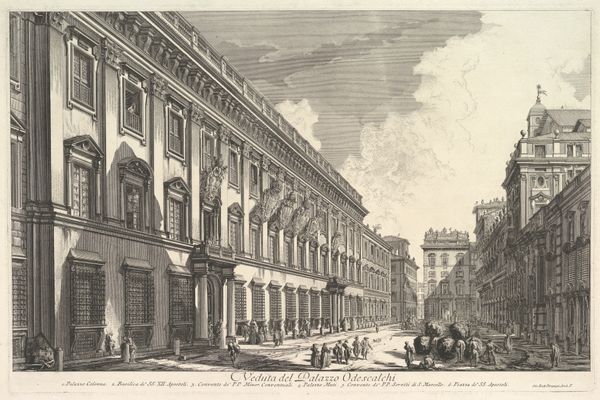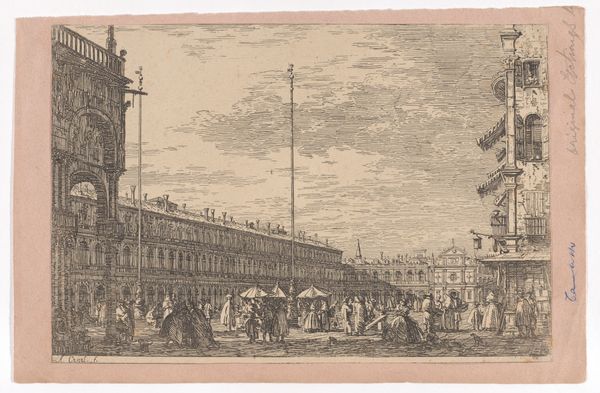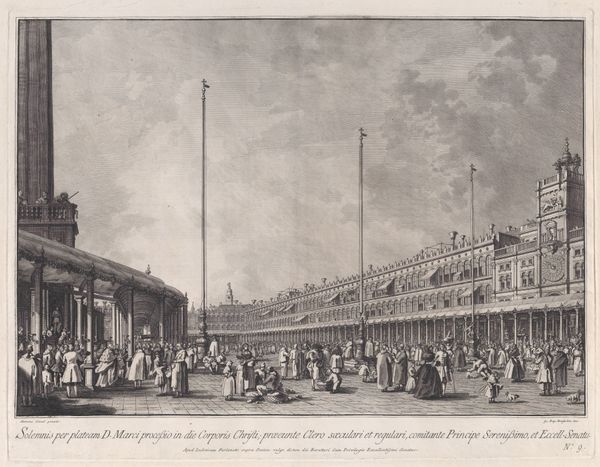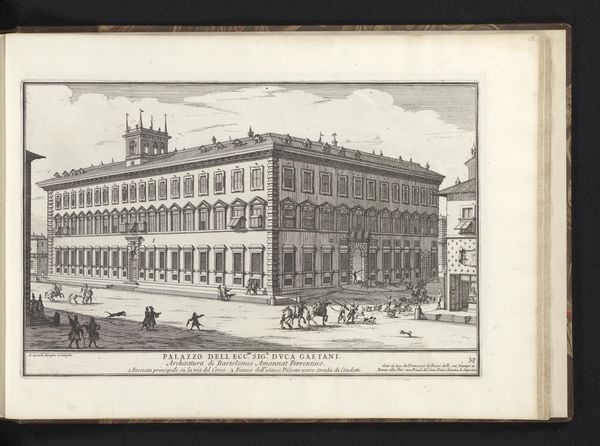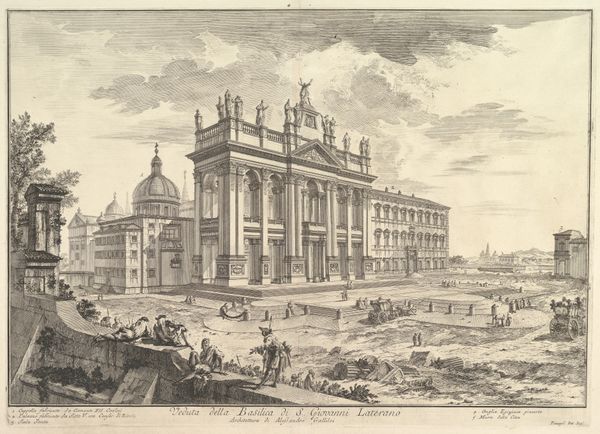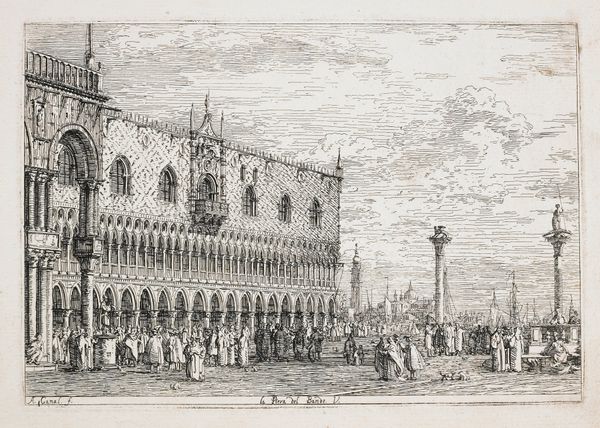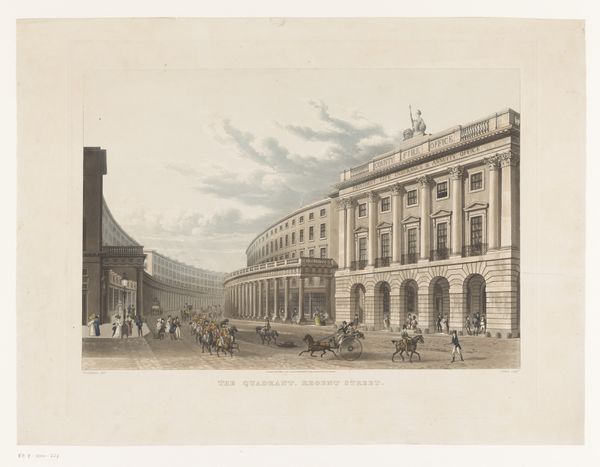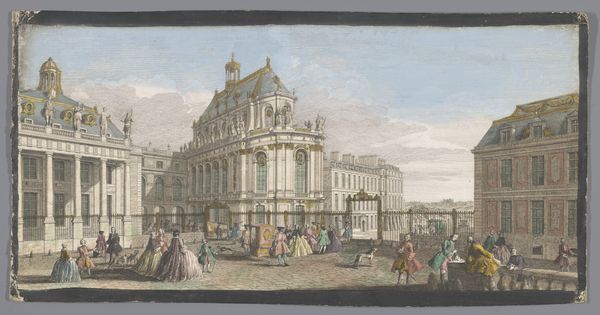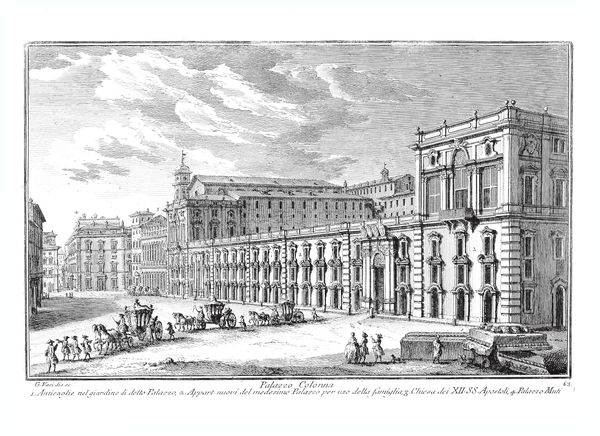
La Libreria V. (The Library 1740 - 1745
0:00
0:00
print, etching, architecture
#
venetian-painting
#
baroque
# print
#
etching
#
etching
#
cityscape
#
italy
#
architecture
Dimensions: 5 11/16 x 8 3/16 in. (14.45 x 20.8 cm) (plate)
Copyright: Public Domain
Curator: Right now we’re looking at "La Libreria V. (The Library)," an etching by Canaletto, made sometime between 1740 and 1745. Editor: It has this quiet industriousness, doesn't it? I’m immediately drawn to the intricate detailing of the architecture, all rendered in these delicate lines... there's a gentle hum, almost, radiating from the marketplace below. Curator: Yes, there's a real dynamism in how Canaletto’s uses etching to evoke Venice. Consider how the printmaking medium here really underscores Venice’s role as a key center of European trade and printing. Editor: The Biblioteca Marciana! Venice, of course, a place of scholarship and exchange, its materiality deeply rooted in paper, ink, and the very act of reproducing images. These materials literally enabled the expansion of knowledge! And each of those figures below, are they buying, selling, perhaps spreading new ideas captured within these bound pages? Curator: He masterfully captured the luminosity of Venice; but more than that, he reveals a sophisticated understanding of linear perspective, transforming cold stone and human architecture into vessels of living light and palpable history. Editor: Definitely palpable. I keep thinking about the hands that pulled each print. And all those Venetian workers at the Arsenale that enabled international maritime commerce—what invisible hands made these things possible? Who harvested the hemp, who wove the canvas sails of all those trading ships, and who designed these marvelous structures? These buildings are books written by laborers from all across the world! Curator: Indeed! And I wonder if it holds a lesson for us? This interplay between precision and atmospheric openness. Canaletto almost whispers the possibility of utopian harmonies between art and societal structures in that meticulous detail. Editor: Maybe Canaletto was trying to tell us that Venice's brilliance—a true convergence of human ingenuity and global resources. A warning against artistic fantasies or individual brilliance detached from the world, perhaps? Curator: Regardless, it really makes you consider all of these aspects woven together! Editor: It does; the print offers an enchanting intersection.
Comments
minneapolisinstituteofart almost 2 years ago
⋮
The sumptuous library was the masterpiece of architect Jacopo Sansovino (1486-1570), but Canaletto makes the people of Venice seem far more interested in the puppet show taking place near the column of St. Theodore at the far left. Theodore was the patron saint if Venice until—according to tradition—the relics of St. Mark were brought to the city in 828 AD. The massive building partly seen at right is the campanile—the bell tower—of the Basilica of San Marco.
Join the conversation
Join millions of artists and users on Artera today and experience the ultimate creative platform.
